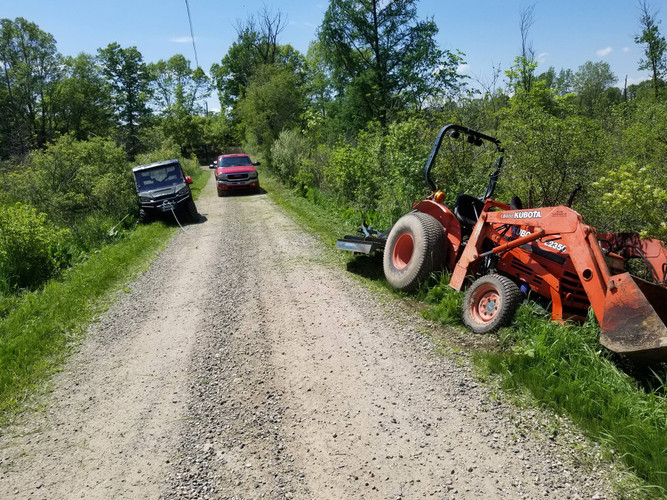Proper Winching Techniques For The Polaris Ranger
Sep 29th 2020
When it comes to operating a Polaris Ranger winch, a little experience will go a long way. And even if you’re new to the Off-Road scene, you can still exercise proper winching techniques when you’re involved in any kind of recovery operation. Although many riders think they know how to use Polaris Ranger winches, it is difficult for someone to learn what they think they already know. So regardless of whether you’re an experienced winch user or a first-time winch owner, the tips and tricks outlined below are sure to assist you with all of your recovery jobs and winch-related endeavors. Pull smarter not harder by following these basic rules for proper winching using the Polaris Ranger!

The Importance Of Polaris Ranger Snatch Blocks
There’s no doubt that the power rating of your Polaris Ranger winch is important. However, there’s more to winching than raw pulling power alone. You definitely don’t want to overstrain your winch, but toting around a monster UTV winch all day every day isn’t required either. Ask anyone who has served in the military and they’ll explain how they were trained to use a snatch block whenever possible to recover stuck vehicles.
The mechanical advantage of a Polaris Ranger snatch block effectively doubles the pulling power of your winch. Not only do they amplify the strength of your winch, but snatch blocks can also be used to run double-line and triple-line rigging. Depending on the distance between your side-by-side and the anchor point, doubling or tripling your winch line can help you increase the power of your winch (because a winch’s power output decreases with every wrap the line makes around the drum).

Things like soft shackle pulleys are good for changing the direction of your winch rigging, however such accessories are not the same snatch blocks. They can help you maintain a 90-degree angle when winching, which ensures that the winch line is spooled properly onto the drum, but they also place unnecessary friction on your winch gear.
Many winch accessory kits for the Polaris Ranger, the Ranger Full-Size, and the Ranger Crew include pulleys and snatch blocks. But companies like Custom Splice, ARB, Warn, TGL, and Smittybilt also make standalone UTV snatch blocks for the Polaris Ranger lineup.
Choosing The Right Polaris Ranger Winch Line
Both synthetic rope winch lines and steel cable winch lines have their strengths and weaknesses. But even though neither winch line material is superior in all aspects, there are situations where one style of winch line works better than the other.
The abrasion resistance of synthetic winch ropes, for example, is something to consider. You should always use tow straps or tree savers when winching with a synthetic winch line, while also making sure that the rope isn’t rubbing against anything on its way back to the winch. And although you shouldn’t loop any winch line, synthetic or otherwise, around rocks, trees, or other objects, cable winch lines will hold up better in situations where this is unavoidable.

Because synthetic lines are more dynamic than steel wire lines, they are able to ease in and out of tension, which can mitigate load stresses in some scenarios. But whichever winch line material you feel more comfortable with, maintenance should never be overlooked. Keeping your winch lines clean, dry, and as covered as possible at all times will help keep them in tip-top shape and greatly prolong their useful life.
The Amsteel Blue Polaris Ranger winch lines are popular, as are the Carr ropes by Custom Splice, the Devil’s Hair ropes by Master Pull, and all the winch lines by Monster Rigging. Similarly, the wire and rope company Phillystran also makes quality winch lines and winch line replacements for the Polaris Ranger. So if you’re wanting a 50-foot 3/16” winch rope, a 40-foot 1/4” winch rope, or any other size / style in between, there are many quality options out there for you to choose from.
Snow Recovery Vs Mud Recovery

The winching tactics you implement will vary slightly depending on how and where you’re stuck. Getting high centered on a rut requires a different approach than getting yourself free from a deep mud hole. And winching your way out of a water hazard is quite different than recovering your machine from a snowbank.
With regards to winter winching methods, it is usually a good idea to pull the vehicle out from the rear. Generally speaking, the buildup of ice and snow in front of the UTV before it gets stuck makes it more difficult to recover from the forward direction. Sure you could dig your way out, and traction boards like the Maxtrax can prove useful for snow recovery tasks well. But the easiest way to recover a UTV from a snowdrift is to do it from the back. And if you’re riding on a frozen lake or any area where natural anchor points are few and far between, tools like the Pull Pal land anchor can be literal lifesavers.
Final Thoughts

As far as Polaris Ranger winches are concerned, bigger isn’t always better. And even with the most expensive and powerful Polaris Ranger winch on the market, without the right ancillary accessories like pulleys, shackles, straps and hooks — as well as the know-how to properly use them all — you could still be stuck up crap creek when you find yourself mired down in waist-high mud or snow. Having the right winching gear is important, but knowing how to use it will ensure that you’re never stuck for long!


